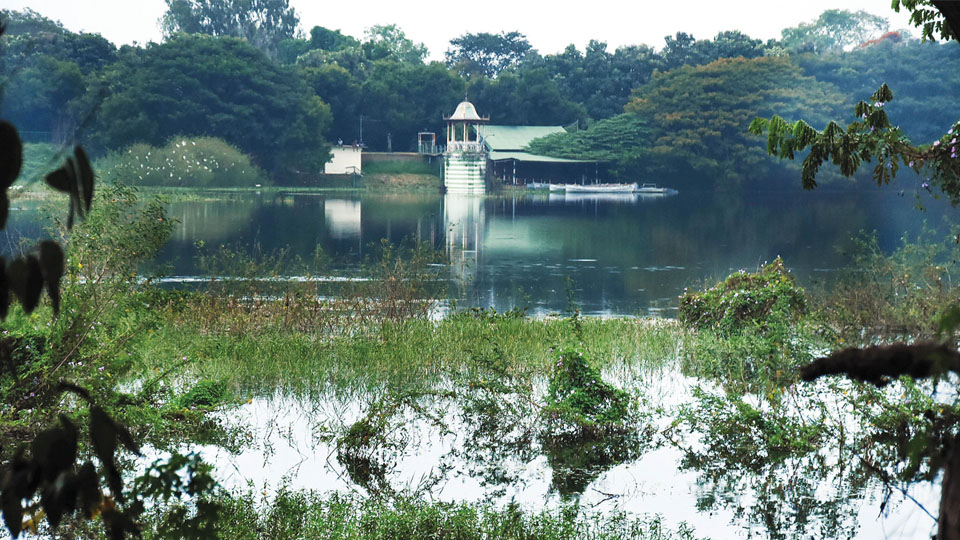Mysore/Mysuru: The Vishwamanava Vidyarthi Vedike has urgently appealed to the Mysuru City Corporation (MCC) to cease the continuous discharge of sewage water into Kukkarahalli Lake.
On a daily basis, substantial volumes of sewage water, predominantly laden with faecal matter and detergent runoff, are entering the renowned lake situated in the heart of the city. This influx is a result of sewage mixing with soap and detergent runoff from the Jayalakshmipuram, Paduvarahalli, and surrounding areas.
Despite numerous attempts in the past by the MCC to halt sewage entry, these efforts have proven unsuccessful, despite assurances from Mayors and Commissioners and even after fund release during the tenure of former Revenue Minister V. Sreenivasa Prasad and MCC Commissioner Raikar.
The Vedike highlighted the MCC’s construction of a bridge near the junction of Valmiki Road and Hunsur Road to prevent sewage entry. Regrettably, following the bridge’s completion, contaminated wastewater continues to flow into Kukkarahalli Lake from the Paduvarahalli side through the magic box drainage inlet. Two streams, one from the side drain adjacent to Hunsur Road and the other from behind Maharani’s College building on Valmiki Road, contribute to this detrimental flow.
Such a continuous discharge of polluted water is poised to exacerbate water quality issues, posing threats to aquatic life and fostering the uncontrolled growth of algae. This, in turn, risks choking the Lake, heightening the prevalence of mosquitoes and other water-borne bacteria.
Vedike’s M.J. Suresh Gowda squarely places the blame on the MCC for its failure to address the sewage flow issue.
In light of the situation, the Vedike implores the MCC to take immediate action, suggesting the diversion of the sewage line to regular underground drainage (UGD) systems and the implementation of measures to block sewage entry into the Lake.
Notably, Kukkarahalli Lake lacks a fresh water inlet and the water within is stagnant. Sullage water further compounds the issue, resulting in foul odours. This pollution adversely affects the bird population that roosts in trees surrounding the Lake and poses a significant threat to the fish population, the primary source of food for birds.








Recent Comments